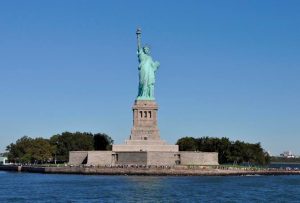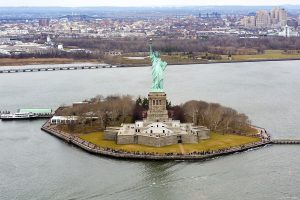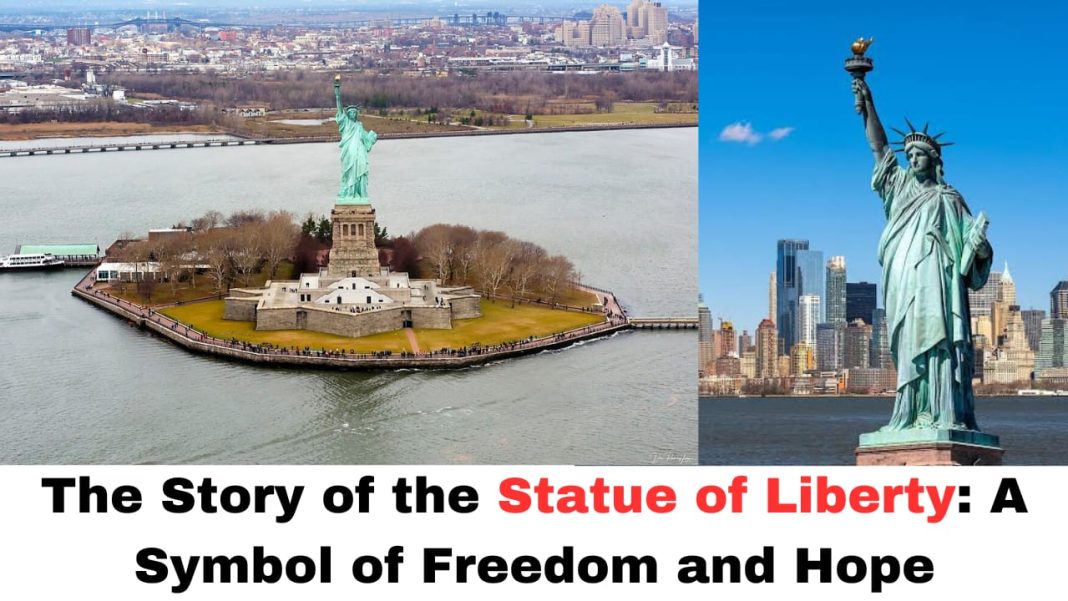Digital News Guru Educational Desk:
The Statue of Liberty is one of the most iconic symbols of freedom, democracy, and hope in the world. Located on Liberty Island in New York Harbor, this colossal statue has become a beacon for immigrants, a symbol of America’s ideals, and a popular tourist attraction. This article delves into the history, design, significance, and impact of the Statue of Liberty, offering a comprehensive look at how this monumental statue has become a timeless emblem of liberty.
The History of the Statue of Liberty
The Statue of Liberty was a gift from the people of France to the United States, symbolizing the enduring friendship between the two nations. It was designed by French sculptor Frédéric Auguste Bartholdi, with the internal structure engineered by the renowned French civil engineer Gustave Eiffel, best known for designing the Eiffel Tower.

The idea for the statue was conceived during the Franco-American alliance in the late 19th century, specifically in 1865, when Édouard de Laboulaye, a French political thinker, suggested that a monument be created to celebrate both the American centennial in 1876 and the enduring friendship between France and the United States. Bartholdi’s design was chosen, and construction began in France in 1875. The statue was completed and shipped to the United States in 1885, where it was reassembled on Liberty Island (then called Bedloe’s Island) in New York Harbor. It was formally dedicated on October 28, 1886.
The Statue of Liberty’s full name is “Liberty Enlightening the World,” and it stands at a towering height of 305 feet (93 meters) from the base to the tip of the torch, making it one of the tallest statues in the world.
Design and Symbolism
The statue depicts Libertas, a Roman goddess of freedom, who is often shown wearing a crown with seven rays, symbolizing the seven seas and continents. She holds a torch in her right hand, raised high, signifying enlightenment and the guiding light of freedom. In her left hand, she carries a tablet inscribed with the date July 4, 1776—the date of the United States Declaration of Independence.
Liberty is dressed in a flowing robe that resembles a classical Greek or Roman attire, representing the classical ideals of democracy, liberty, and justice. The broken chains at her feet symbolize the abolition of slavery and the triumph of freedom over oppression. The choice of a female figure as the embodiment of liberty and freedom further emphasizes the universality and strength of these values.
The statue’s design was not only a technical achievement, but it also embodied the spirit of liberty and freedom that the United States stood for at the time. It served as a statement of ideals and a welcoming gesture to immigrants arriving on the shores of America.
Construction and Engineering Feat
The Statue of Liberty is not only an artistic masterpiece, but its construction was also an engineering marvel of the time. The statue’s outer shell is made of copper sheets that were hammered into shape and then riveted to a framework of iron. The inner structure was designed by Gustave Eiffel, who utilized his innovative engineering techniques, which he later applied to the construction of the Eiffel Tower. Eiffel’s design included a framework of iron, providing stability while allowing the statue to withstand winds and weather conditions.

The construction of the statue in France took approximately nine years, from 1876 to 1885. The statue was then disassembled and shipped to New York in 350 individual pieces, arriving in 214 wooden crates. It was reassembled on Liberty Island, and the dedication ceremony was held on October 28, 1886. The project had faced numerous challenges, including funding issues and concerns about the statue’s structural integrity. However, the completion of the Statue of Liberty was a triumph of both artistic vision and engineering innovation.
The Statue of Liberty as a Symbol of Immigration
For millions of immigrants arriving in the United States, the Statue of Liberty has long been a symbol of hope, opportunity, and the promise of a better life. As ships passed through New York Harbor, the statue was often the first glimpse immigrants had of their new homeland. The sight of Lady Liberty, towering above the harbor, filled many with awe and a sense of possibility.
In the late 19th and early 20th centuries, New York’s Ellis Island was the primary immigration station for those entering the United States, and many of these immigrants would have passed by the Statue of Liberty as they made their way into the country. It is estimated that over 12 million immigrants passed through Ellis Island between 1892 and 1954.
The connection between the Statue of Liberty and immigration is so deeply rooted in American history that the statue is often associated with the ideals of freedom and refuge. Lady Liberty, holding her torch high, represented the guiding light to a better future for those escaping oppression and poverty in their homeland.
Cultural Impact and Recognition
The Statue of Liberty’s significance extends far beyond its physical structure. It has become a symbol of the United States itself, representing the core values of democracy, freedom, and justice. The statue has appeared in countless works of art, literature, and films. It has been the subject of poems, including the famous lines by Emma Lazarus, who wrote the poem “The New Colossus” in 1883. The lines “Give me your tired, your poor, your huddled masses yearning to breathe free” are inscribed on a plaque at the statue’s base, cementing the statue’s place as a symbol of hope for immigrants.
The statue is also a common feature in American pop culture, often depicted in movies, cartoons, and political commentary as a representation of the American spirit. Its iconic silhouette, especially the image of Lady Liberty with her raised torch, is instantly recognizable around the world.
Restoration and Preservation
Over the years, the Statue of Liberty has undergone several restorations to ensure its preservation for future generations. The most significant restoration occurred in the 1980s, leading up to the centennial celebration of the statue in 1986. This restoration included the replacement of the copper skin, which had become discolored and corroded, and the reinforcement of the internal structure. Today, the statue is maintained by the National Park Service and is part of the Statue of Liberty National Monument.

The island and the statue remain a major tourist destination, attracting millions of visitors each year. Visitors can take a ferry to Liberty Island and explore the museum located in the pedestal of the statue, which offers a detailed history of the monument’s creation, significance, and cultural impact. Climbing to the crown of the statue offers a breathtaking view of New York Harbor and the Manhattan skyline.
Conclusion
The Statue of Liberty is not just a monumental work of art, but a living symbol of the ideals that form the foundation of the United States. From its design and construction to its role as a beacon of hope for immigrants and a representation of freedom and democracy, the Statue of Liberty continues to inspire people around the world. As it stands tall in New York Harbor, Lady Liberty serves as a reminder that liberty, equality, and justice remain ideals worth striving for, offering a timeless message of hope to all who encounter it.
You May Also Read: Top 10 Indian action movies of 2024








